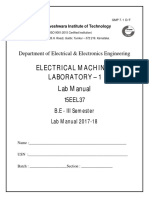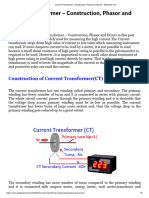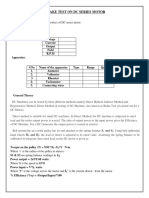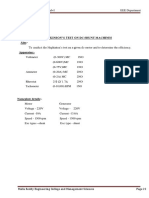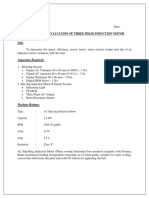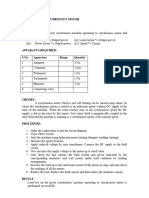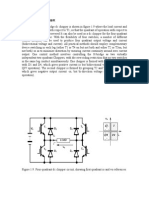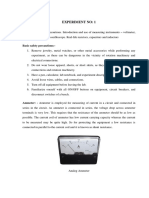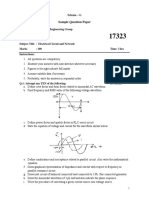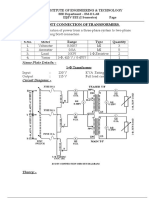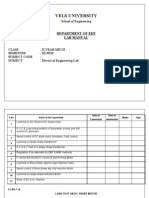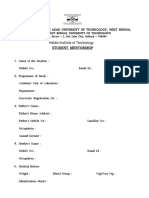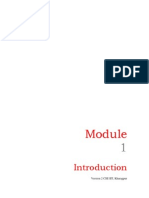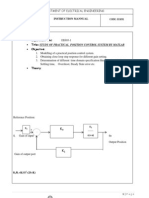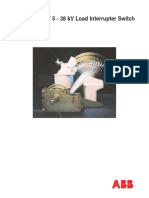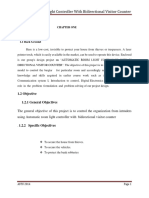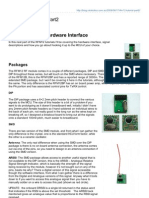0% found this document useful (1 vote)
2K views22 pagesElectrical Engineering Lab Guide
This document contains procedures for performing load tests on several types of electrical equipment:
1. A load test on a single-phase transformer to draw its efficiency and regulation characteristics.
2. A Swinburn's test to predetermine the efficiency of a DC machine as a motor and generator by taking no-load readings.
3. A load test on a DC series motor to draw its performance characteristics by increasing the load and measuring speed, torque, voltage and current.
4. Open circuit and load characteristics tests of a self-excited DC shunt generator to draw its characteristics by varying the field current and load.
Uploaded by
Namrajit DeyCopyright
© © All Rights Reserved
We take content rights seriously. If you suspect this is your content, claim it here.
Available Formats
Download as DOC, PDF, TXT or read online on Scribd
0% found this document useful (1 vote)
2K views22 pagesElectrical Engineering Lab Guide
This document contains procedures for performing load tests on several types of electrical equipment:
1. A load test on a single-phase transformer to draw its efficiency and regulation characteristics.
2. A Swinburn's test to predetermine the efficiency of a DC machine as a motor and generator by taking no-load readings.
3. A load test on a DC series motor to draw its performance characteristics by increasing the load and measuring speed, torque, voltage and current.
4. Open circuit and load characteristics tests of a self-excited DC shunt generator to draw its characteristics by varying the field current and load.
Uploaded by
Namrajit DeyCopyright
© © All Rights Reserved
We take content rights seriously. If you suspect this is your content, claim it here.
Available Formats
Download as DOC, PDF, TXT or read online on Scribd
/ 22





